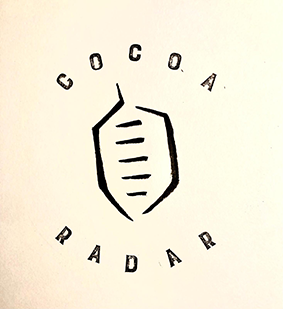The new study, conducted by the George Washington University School of Medicine and ConsumerLab.com and published today in the journal Frontiers, analysed 72 consumer cocoa products for levels of lead, cadmium, and arsenic. Compared with prior studies, which have looked at heavy metals in chocolate over a snapshot of time, the GWU study tested the products over eight years, in 2014, 2016, 2018, and 2020.
The research suggests that regular consumption over a certain quantity can lead to significant health risks linked to cancer, chronic disease, or reproductive and developmental issues, especially in children.
If contaminated products as a whole are consumed in small amounts and infrequently by most, these contaminants may not be a public health concern. In contrast, if the average consumer consumes many such products fairly regularly, the additive exposure may be a public health concern.
Consumer Labs, a nonprofit that provides third-party testing on health and nutrition products, conducted the testing. It sent samples to various laboratories to maximize accuracy.
Maximum allowable dose levels for cadmium and lead
Of the six dozen chocolate products tested throughout the study, researchers found that 43% exceeded the maximum allowable dose level for lead as established by California’s Proposition 65, while 35% exceeded the Prop 65 maximum allowable level for cadmium, researchers found. The study found no significant levels of arsenic.
CNN explained that Prop 65 limits are lower than those established by the federal government. According to the FDA, the maximum allowable level of lead in children’s candy is 0.1 parts per million. California’s Prop 65 sets a safety standard of .05 parts per million for chocolate, approximately half the amount.
The paper reported that "if contaminated products as a whole are consumed in small amounts and infrequently by most, these contaminants may not be a public health concern. In contrast, if the average consumer consumes many such products fairly regularly, the additive exposure may be a public health concern.”
The study also recommended a call for more testing of consumer products.
Response from the National Confectioners Association
In a media statement, the National Confectioners Association (NCA) said: “Chocolate and cocoa are safe to eat and can be enjoyed as treats as they have been for centuries. Food safety and product quality remain our highest priorities, and we remain dedicated to being transparent and socially responsible.
The US Food and Drug Administration (FDA) said: “While the presence of cadmium and lead in chocolate has been the subject of considerable media attention, experts from around the world have found that chocolate is a minor source of exposure to these contaminants internationally.”
Lead in cocoa comes from many sources, including soil, dust, and deposition from power plants around the world, according to NCA’s own research.
AgDaily said lead can adhere to the outer shells of cocoa beans after they are extracted from the pods. When they are harvested, cocoa beans are naturally covered with a sticky cacao pulp, which allows lead to cling to the beans while they are fermented and dried in the open in the tropical countries where cocoa is grown.
Those shells, however, are removed at the beginning of the chocolate-making process.
Cadmium is found primarily in dark chocolate and organic cocoa due to its presence in tropical soils where crops are cultivated and harvested. The NCA explained that cocoa trees absorb cadmium from soils via their roots and deposit it in the nibs (center) of cocoa beans.
“While it’s not practical to avoid heavy metals in your food entirely, you must be cautious of what you are eating and how much,” said Leigh Frame, director of integrative medicine at George Washington University.
Organic chocolate
Researchers examined only pure dark chocolate products as they contain the highest amount of cacao, the raw, unprocessed part of the cacao bean. Candies or baking chocolates with other ingredients were eliminated. Organic-labelled products showed higher levels of lead and cadmium compared to non-organic products.
The study did not disclose the names or manufacturers of the tested products. Still, there are solutions for chocolate makers to lower cadmium levels by blending low and high cadmium beans.
European Union maximum levels for lead and cadmium
In 2021, the European Commission set new maximum levels for lead and cadmium in a range of food products to protect public health. The maximum allowed lead content ranges from 0.01 mg/kg in some baby foods to 3 mg/kg in food supplements. Most meat products, fats, and oils should not contain more than 0.1 mg/kg of lead, while the limits for fruit, vegetables, and fungi vary between 0.1 mg/kg and 0.8 mg/kg.
For cadmium, maximum levels range from 0.005 mg/kg in milk protein-based baby foods to 3 mg/kg in supplements. Fruit, vegetables, and fungi must not contain more than 0.02–0.5 mg/kg of cadmium, and the limits for most meat and fish products vary from 0.05 to 0.15 mg/kg.
The full EU guidelines can be found here:
https://eur-lex.europa.eu/eli/reg/2021/1317/oj
https://eur-lex.europa.eu/eli/reg/2021/1323/oj

